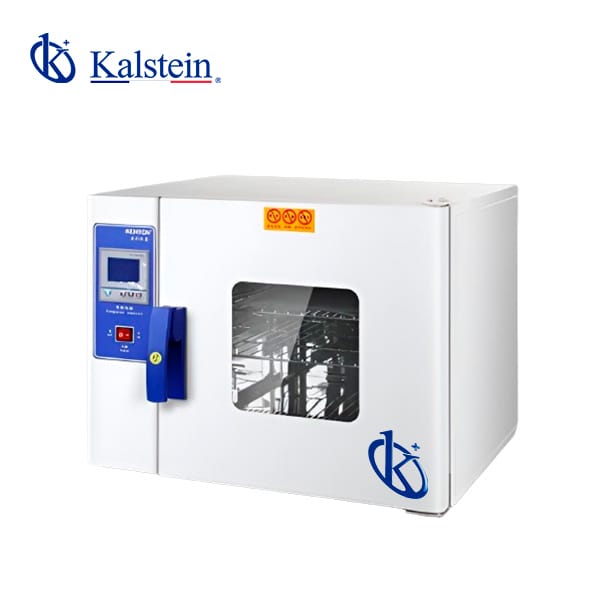In the laboratory world, digital transformation has taken center stage. Automating routine processes not only saves time but also reduces the possibility of human errors. Modern ovens equipped with digital controls and remote monitoring capabilities are a clear example of this trend. These ovens allow technicians to program heating cycles precisely, receive alerts about any deviations, and adjust parameters without being physically present.
The ability to integrate these ovens into broader laboratory networks also facilitates data collection and analysis, enabling researchers to make informed decisions based on real-time information. This level of automation and connectivity is essential in laboratories seeking to improve efficiency and accuracy in their processes.
Focus on Sustainability: Energy-Efficient Laboratory Ovens
Sustainability is a growing priority across all sectors, and laboratories are no exception. Laboratory ovens have evolved to be more energy-efficient, using materials and technologies that reduce energy consumption and carbon emissions. For instance, many modern ovens are designed with enhanced insulation and thermal control systems that maintain consistent temperatures with lower energy use.
Additionally, some ovens come with automatic shut-off features and standby modes that decrease energy consumption when not in use. These innovations not only benefit the environment but can also translate into significant operational cost savings for laboratories.
Innovations in Laboratory Equipment: Ovens with Advanced Technology
The development of new technologies has led to the creation of more advanced and versatile laboratory ovens. Innovations in laboratory equipment have resulted in features such as improved temperature uniformity, the ability to perform precise heating cycles, and the integration of intelligent control systems. These features are essential for critical applications where precision and reproducibility are fundamental.
For example, ovens with microprocessor technology allow for extremely precise temperature adjustments and offer customized heating programs. This is particularly useful in research and development processes where every detail matters. Additionally, some ovens now include self-diagnostic capabilities, alerting users to potential issues before they affect experimental results.
Developments in Medical Devices: Ovens for Biomedical Applications
Advancements in medical devices have driven the need for specialized laboratory ovens for biomedical applications. These ovens must meet stringent temperature control and sterilization requirements to ensure safety and efficacy in the processing of biological samples and the development of pharmaceutical products.
Ovens used in biomedical settings are often designed to provide a sterile and controlled environment, minimizing the risk of contamination. This is crucial in disease research and vaccine development, where even the slightest temperature variation can significantly impact results.
Customization and Flexibility: Ovens Adaptable to Specific Needs
Another important trend in the laboratory sector is the demand for equipment that can be customized to meet specific needs. Modern laboratory ovens offer significant flexibility in terms of configuration and functionality. Users can select ovens with different capacities, temperature ranges, and additional features according to their particular requirements.
This ability to customize is especially valuable in research laboratories where experiments can vary widely in their thermal needs. Having an oven that can be adjusted for different applications not only saves time and resources but also improves the overall efficiency of the laboratory.
Integration of Ovens into Smart Laboratory Ecosystems
Finally, the integration of ovens into smart laboratory ecosystems is an emerging trend that is changing the way laboratories are managed and operated. Modern ovens with IoT (Internet of Things) connectivity can communicate with other laboratory equipment, share real-time data, and receive instructions remotely. This connectivity allows for more coordinated and efficient management of laboratory resources.
Furthermore, the ability to monitor and control ovens through mobile apps or cloud platforms enables technicians and scientists to supervise critical processes from anywhere. This not only increases operational flexibility but also enhances the ability to respond to any issues that may arise, ensuring greater continuity and quality in laboratory work.
In conclusion, the latest trends in the laboratory sector are clearly aligned with innovations in laboratory ovens. From automation and sustainability to advanced technology and customization, modern ovens are playing a crucial role in improving the efficiency, accuracy, and flexibility of laboratories. Integrating into smart laboratory ecosystems not only promises to transform daily operations but also positions these devices as essential for the future of scientific research and development.
These trends not only reflect technological evolution but also a growing commitment to sustainability and adaptation to specific user needs, ensuring that laboratories can operate more efficiently and effectively in a constantly changing world.
If you want to explore the high-end product catalog we have for you at KALSTEIN, visit us at https://kalstein.de/category-product/laboratory-line/ovens/. We assure you that through our easy and feasible online purchase channels, you will find the best prices on the market. Remember that we at KALSTEIN manufacture high-level laboratory equipment for sale.https://kalstein.de/

